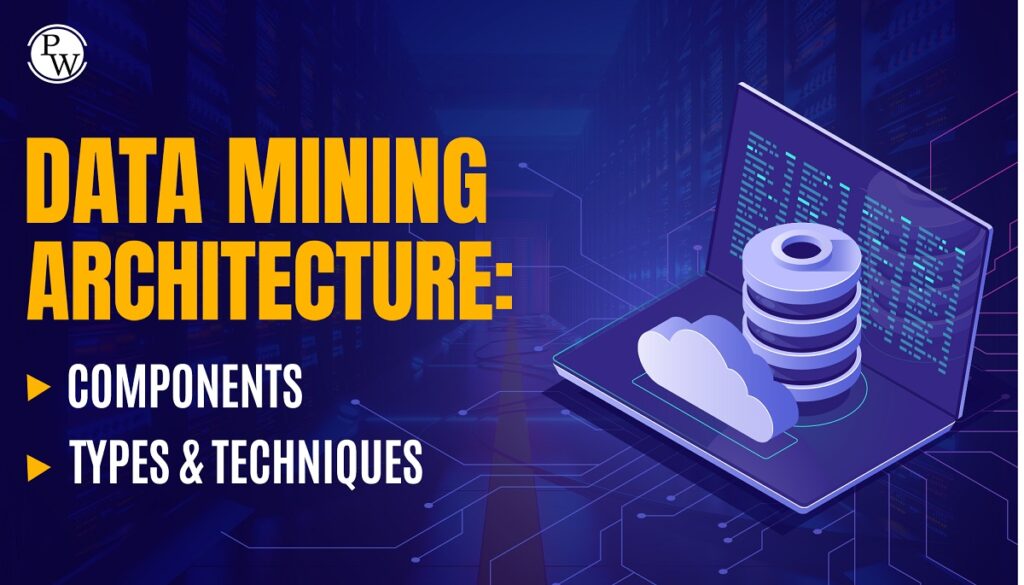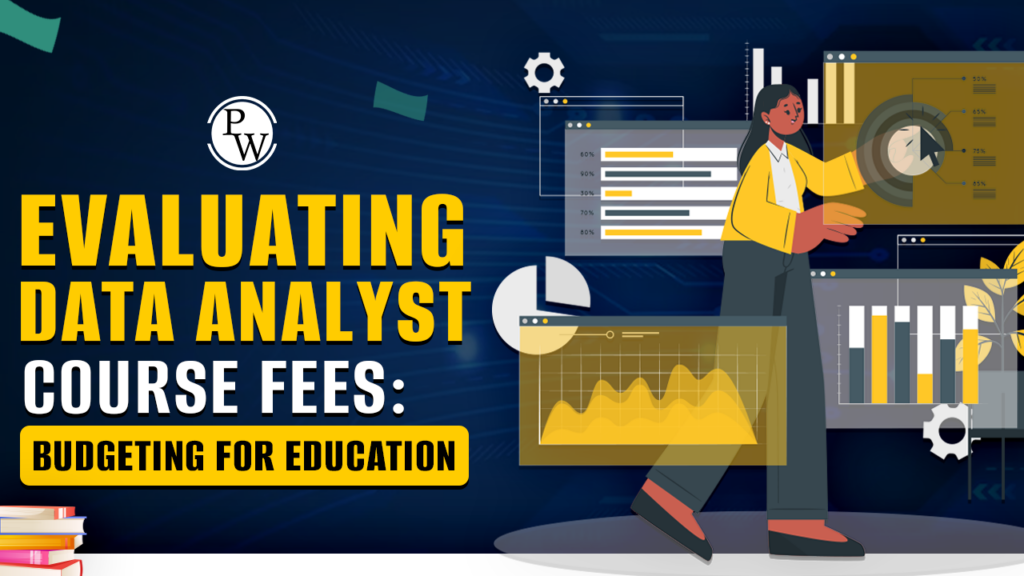Challenges of Data Analytics: In the ever-evolving landscape of the digital age, data analytics has emerged as a cornerstone for informed decision-making across various domains. From business operations to scientific research and audit processes, organisations are leveraging data analytics to derive valuable insights.
However, this journey is not without its challenges. In this blog, we will discuss the most common challenges of data analytics and how to solve them in 2024.
If you want to become a highly impactful and successful data analyst, the PhysicsWallah’s Mastering Full Stack Data Analytics Course could be just what you need! Enroll in this course and gain the skills to become a data analytics expert. Learn Python, MySQL, Excel, Power BI, Tableau, data analysis, machine learning, and more. Start your journey today!
Top 10 Challenges of Data Analytics in Business
Data analytics is crucial for smart decision-making in today’s fast-paced business world. However, businesses encounter various hurdles in implementing effective data analytics strategies as they strive to stay competitive. Here, we’ll explore solutions and the top 10 challenges of data analytics in businesses.
Overcoming Diverse Data Sources: Businesses grapple with the integration of data from various sources such as social media, customer databases, and IoT devices. The challenge lies in harmonising disparate data formats and structures.
- Solutions
-
-
-
- Data Integration Platforms: Deploying advanced data integration platforms streamlines the process, ensuring compatibility across diverse datasets.
- Standardised Data Formats: Encouraging the adoption of standardised data formats simplifies integration efforts.
-
-
Strategies for Seamless Integration: Developing effective strategies to seamlessly integrate data is crucial for avoiding disruptions in analytics processes.
- Solutions:
-
-
-
- Data Integration Roadmaps: Creating comprehensive roadmaps for data integration facilitates a step-by-step approach, minimising disruptions.
- Agile Integration Methodologies: Adopting agile integration methodologies allows businesses to adapt quickly to evolving data needs.
-
-
Recognizing the Shortage of Skilled Data Analysts: The shortage of skilled data analysts poses a significant obstacle for businesses aiming to extract meaningful insights from their data.
- Solutions:
-
-
-
- Internal Training Programs: Investing in internal training programs empowers existing employees with the necessary skills.
- External Partnerships: Collaborating with educational institutions or specialised training providers helps in bridging the skills gap.
-
-
Solutions for Training and Upskilling: Providing accessible and targeted training solutions is essential to ensure that the workforce is equipped to handle data analytics responsibilities.
- Solutions:
-
-
-
- Online Learning Platforms: Leveraging online platforms for continuous learning allows employees to upskill at their own pace.
- Mentorship Programs: Establishing mentorship programs connects experienced data professionals with those seeking to enhance their skills.
-
-
Highlighting the Rising Threats to Data Security: With the increasing volume and value of data, businesses face escalating threats to data security, including breaches and cyber-attacks.
- Solutions:
-
-
-
- Encryption Protocols: Implementing robust encryption protocols ensures that sensitive data remains secure, even in the event of unauthorised access.
- Regular Security Audits: Conducting frequent security audits identifies vulnerabilities and allows for proactive mitigation.
-
-
Implementing Robust Cybersecurity Measures: Businesses need to fortify their defences against evolving cybersecurity threats to safeguard valuable data assets.
- Solutions:
-
-
-
- Multi-Factor Authentication (MFA): Incorporating MFA adds an extra layer of security to authenticate user identities.
- Incident Response Plans: Developing comprehensive incident response plans ensures a swift and effective reaction to security breaches.
-
-
Identifying Infrastructure Limitations: Outdated or insufficient infrastructure can hinder the efficiency of data analytics processes, limiting the scale and speed of analysis.
- Solutions:
-
-
-
- Infrastructure Assessment: Conducting regular assessments of existing infrastructure identifies areas that require upgrades or optimization.
- Cloud Migration: Transitioning to cloud-based infrastructure provides scalability and flexibility to meet growing data demands.
-
-
Upgrading and Optimising Infrastructure: Recognizing the need for continuous investment in infrastructure is essential for sustaining and enhancing data analytics capabilities.
- Solutions:
-
-
-
- Predictive Scaling: Employing predictive scaling models anticipates future data requirements, ensuring proactive infrastructure adjustments.
- Edge Computing: Exploring edge computing solutions brings data processing closer to the source, reducing latency and enhancing analytics speed.
-
-
Clean and Accurate Data: The value of analytics depends on high-quality data. Inaccurate or incomplete data can lead to decisions that go off track.
- Solutions:
-
-
-
- Data Quality Frameworks: Establishing frameworks for data quality management includes processes for data cleansing, validation, and enrichment.
- Automated Data Cleansing: Implementing automated tools for data cleansing identifies and rectifies inconsistencies, ensuring data accuracy.
-
-
Implementing Data Quality Management Processes: Proactive measures are required to maintain data quality standards and prevent degradation over time.
- Solutions:
-
-
- Data Governance Policies: Implementing robust data governance policies ensures accountability and ownership of data quality throughout the organisation.
- Regular Audits: Conducting periodic audits of data quality processes ensures ongoing adherence to established standards.
-
Also read: 6 Benefits of Data Analytics That Will Blow Your Mind!
5 Challenges of Data Analysis in Research
Here are 5 challenges of data analysis in research:
1. Reproducibility Issues
In the realm of research, the reproducibility of results is a critical concern. Reproducibility ensures the reliability and validity of research findings, but it is often challenging to achieve.
Solutions:
- Documentation and Code Repositories: Thorough documentation of research methodologies and sharing code repositories enhances transparency and facilitates the reproduction of results.
- Adoption of Standard Practices: Following standard practices in research, such as using open-source tools and transparent methodologies, contributes to reproducibility.
2. Dealing with Big Data
As research datasets grow in size and complexity, managing and analysing big data become significant challenges.
Solutions:
- Advanced Analytics Tools: Leveraging advanced analytics tools designed for handling big data can streamline the analysis process.
- Distributed Computing: Utilising distributed computing frameworks, such as Apache Hadoop, enables the parallel processing of large datasets.
Also read: Benefits of Big Data Analytics – With Examples
3. Ethical Considerations
The ethical implications of data analysis in research cannot be overlooked. Issues related to privacy, consent, and responsible data usage must be addressed.
Solutions:
- Ethics Committees: Establishing ethics committees within research institutions can provide guidance and oversight on ethical considerations.
- Ethics Training: Providing researchers with ethics training ensures a comprehensive understanding of ethical practices in data analysis.
4. Data Privacy
Protecting the privacy of individuals whose data is used in research is a growing concern. Striking a balance between data utility and privacy is crucial.
Solutions:
- Anonymization Techniques: Employing anonymization techniques on sensitive data protects individual identities while allowing for meaningful analysis.
- Privacy Impact Assessments: Conducting privacy impact assessments helps identify and mitigate potential privacy risks before starting the analysis.
5. Interpreting Complex Results
In the era of sophisticated analytics, interpreting complex results poses a significant challenge. Communicating intricate findings in a clear and understandable manner is essential.
Solutions:
- Data Visualization: Utilising effective data visualisation techniques enhances the communication of complex results to a broader audience.
- Interdisciplinary Collaboration: Collaborating with experts from diverse fields can provide valuable insights and perspectives on complex analytical findings.
5 Challenges of Data Analytics in Business
Here are 5 common challenges of data analytics in business:
1. Aligning Analytics with Business Goals
A key challenge is aligning analytics with overall business goals. Often, there’s a gap between what data teams analyse and what the business requires for strategic decisions. For data analytics to be valuable, it must directly contribute to achieving business objectives. However, without a clear alignment strategy, data analytics efforts might focus on irrelevant or less impactful metrics. This misalignment can result in wasted resources and missed opportunities for gaining a competitive edge.
Solutions:
- Strategic Planning: Integrate data analytics into the strategic planning process. Ensure that analytics initiatives are directly linked to the broader business objectives.
- Regular Performance Reviews: Conduct regular reviews to evaluate how analytics initiatives are contributing to business goals. This allows for adjustments and optimizations as needed.
2. Real-time Analytics
The demand for real-time insights has surged in today’s fast-paced business environment. Traditional analytics processes often struggle to deliver instantaneous results, hindering the ability to make timely decisions. Businesses now operate in a dynamic landscape where delays in data analysis can result in missed opportunities or incorrect responses to market changes. Real-time analytics is crucial for staying competitive, especially in industries where swift decision-making is paramount.
Solutions:
- In-Memory Analytics: Utilise in-memory analytics to process data faster by storing it in the system’s RAM rather than on disk.
- IoT Integration: Incorporate data streams from Internet of Things (IoT) devices to provide a continuous flow of real-time information for analysis.
3. Scalability Issues
As businesses grow, the scalability of analytics solutions becomes a critical concern. Analytics systems that worked well in the early stages may struggle to handle increased data volumes and evolving business needs. The scalability challenge is multifaceted, involving not just the volume of data but also the complexity of analytical processes. Organisations must be prepared to scale their analytics infrastructure without compromising performance or incurring exorbitant costs.
Solutions:
- Cloud-based Solutions: Leverage cloud computing to access scalable resources on-demand, allowing businesses to adjust their analytics capacity based on fluctuating needs.
- Scalability Planning: Develop a roadmap for scalability, anticipating future data requirements and ensuring that analytics solutions can grow in tandem with the business.
4. Change Management
Implementing data analytics often requires a cultural shift within an organisation. Resistance to change from employees accustomed to traditional decision-making processes can impede successful adoption. People, processes, and systems all need to adapt to the new paradigm of data-driven decision-making. Without proper change management, employees may resist new tools and methodologies, hindering the effectiveness of analytics initiatives.
Solutions:
- Change Management Strategies: Develop and implement change management strategies that include communication plans, training programs, and leadership support to help employees adapt to new ways of working.
- Leadership Support: Strong support and advocacy for analytics initiatives from leadership can influence a positive change in organisational culture.
5. Cost Management
Managing the costs associated with data analytics projects can be a significant challenge. The expenses related to infrastructure, software, personnel, and ongoing maintenance can accumulate quickly.Without efficient cost management, organisations risk overspending on analytics initiatives, potentially diminishing the return on investment. Balancing the benefits of analytics with the associated costs is crucial for sustained success.
Solutions:
- Cost-Benefit Analysis: Conduct a thorough cost-benefit analysis to evaluate the potential value of analytics initiatives against the costs involved.
- Optimization of Resources: Identify and optimise resources, such as hardware, software, and personnel, to ensure cost efficiency without compromising analytics quality.
Also check: Choosing the Right Data Analytics Platform for Your Business
5 Challenges of Data Analytics in Audit
Here are 5 challenges of data analytics in audit:
1. Ensuring Data Accuracy in Auditing
Accuracy is paramount in audit processes, and ensuring the accuracy of audit data is a constant challenge.
Solutions:
- Data Validation Processes: Implementing robust data validation processes verifies the accuracy and reliability of audit data.
- Automation of Validation: Automating validation processes reduces the risk of human error and enhances accuracy.
2. Regulatory Compliance
The ever-changing landscape of regulations poses challenges in ensuring compliance in audit processes.
Solutions:
- Regular Compliance Audits: Conducting regular audits to ensure compliance with relevant regulations and updating processes accordingly.
- Integration of Compliance Checks: Integrating compliance checks into audit processes ensures ongoing adherence to regulatory requirements.
3. Fraud Detection Challenges
Detecting fraud requires advanced analytics capabilities, and organisations often face challenges in identifying and preventing fraudulent activities.
Solutions:
- Advanced Analytics Models: Implementing advanced analytics models, such as machine learning algorithms, enhances the ability to detect patterns indicative of fraud.
- Continuous Monitoring: Implementing continuous monitoring systems provides real-time insights into potential fraudulent activities.
4. Integration with Traditional Audit Processes
Integrating data analytics with traditional audit processes can be challenging, as it requires a seamless fusion of methodologies.
Solutions:
- Hybrid Approaches: Adopting hybrid approaches that combine traditional audit methods with data analytics for a comprehensive audit strategy.
- Training Programs: Providing training programs to audit professionals on the integration of analytics into their processes.
5. Continuous Monitoring
Traditional audit processes may not always provide real-time insights. Continuous monitoring is crucial for proactive audit measures.
Solutions:
- Real-time Analytics Tools: Utilising tools that offer real-time analytics capabilities for continuous monitoring.
- Automated Alerts: Implementing automated alert systems that notify auditors of irregularities as soon as they occur.
Also check: Data Security in 2023
Conclusion
The challenges of data analytics are diverse and ever-evolving. However, by understanding these challenges and implementing effective solutions, organisations can unlock the true potential of data-driven decision-making. Whether in business operations, research endeavours, or audit processes, the integration of data analytics is a journey that demands strategic planning, continuous adaptation, and a commitment to excellence.
FAQs
How Can Businesses Ensure Data Privacy While Leveraging Analytics?
Ensuring data privacy is a top priority. Employ anonymization techniques, conduct privacy impact assessments, and establish clear policies for ethical data use to strike a balance between data utility and privacy.
What Measures Can Organizations Take to Avoid Bias in Analytics Algorithms?
Mitigating bias is crucial. Ensure diverse representation in training datasets, adhere to ethical AI guidelines, and implement continuous training for data teams on ethical considerations to minimise biases in analytics models.
How Do Businesses Stay Updated with Rapid Technological Advancements in Data Analytics?
Keeping pace with technological advancements requires continuous learning initiatives. Encourage ongoing education for data professionals, pilot programs for emerging technologies, and foster cross-functional collaboration between data and technology teams.
What Role Does Data Governance Play in Overcoming Data Analytics Challenges?
Data governance is pivotal. Establish robust data governance frameworks, leverage automated governance tools, and conduct regular audits to ensure consistency and accountability in data management.
Can Real-time Analytics Truly Impact Decision-Making in Business?
Absolutely. Real-time analytics, facilitated by in-memory analytics and IoT integration, is indispensable for timely decision-making in today's dynamic business environment, preventing missed opportunities and ensuring agile responses to market changes.





